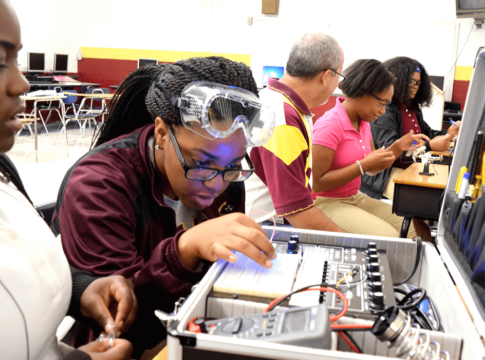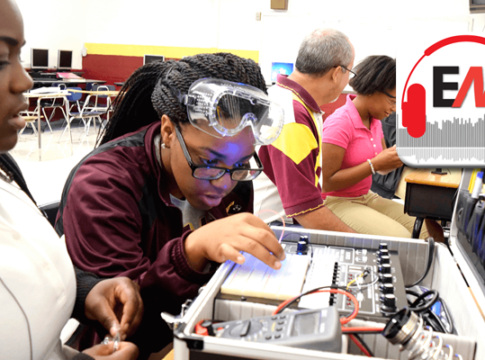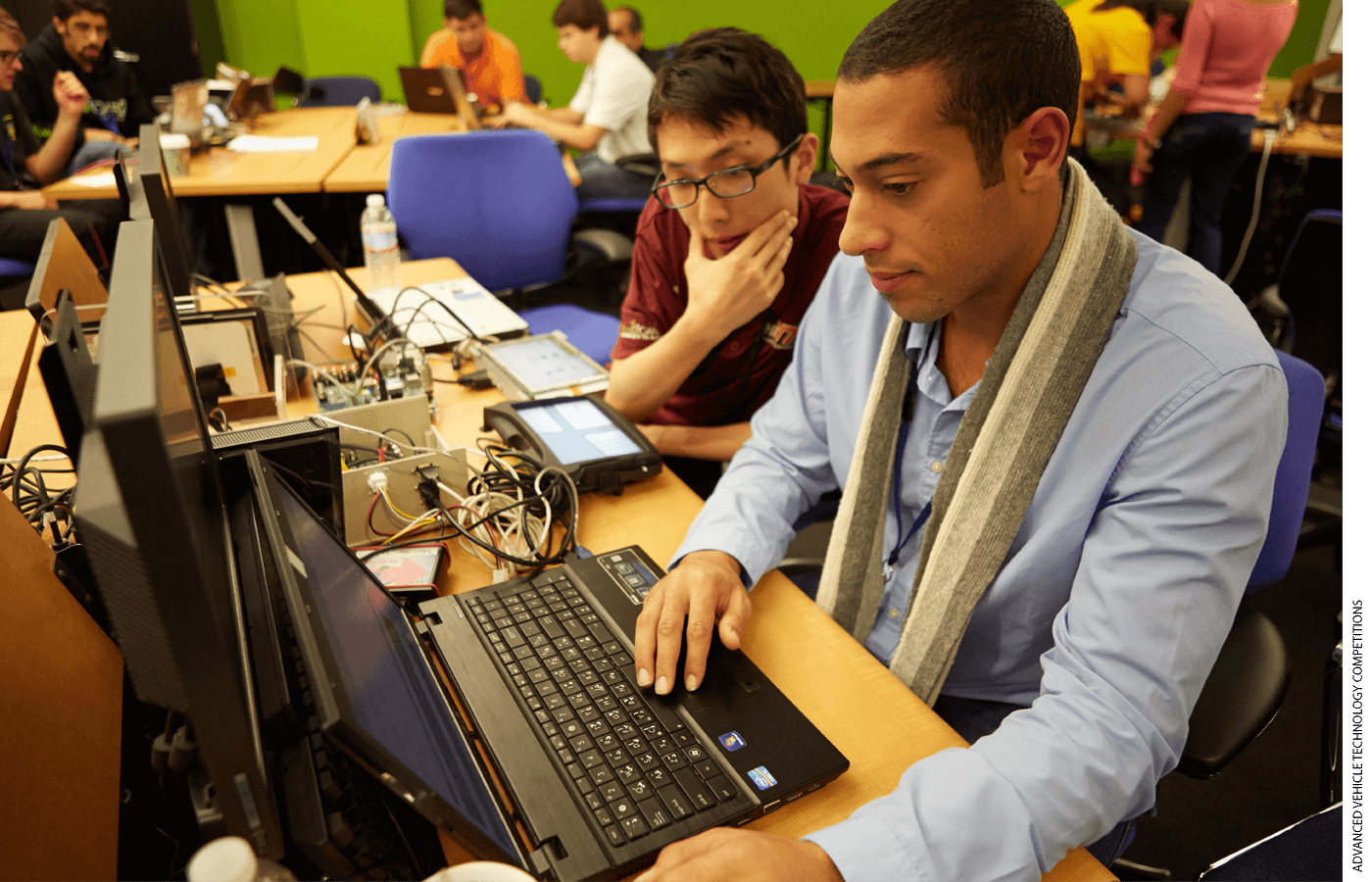
The state of California, a long-time leader in college access, has turned its attention to improving college persistence and degree completion. In particular, recent changes to remediation policies in the California State University (CSU) system, the largest four-year system in both California and the U.S., mark an important shift in how the state approaches the problem of low academic preparation among many incoming students. For decades, CSU required that students who did not meet college-readiness thresholds based on K–12 exams and coursework be assessed with homegrown exams in English and mathematics. Students who failed these tests were placed in remedial, non–credit-bearing courses. This practice ended in August 2017, when CSU Chancellor Timothy White signed Executive Order 1110, effective for the entering Fall 2018 freshmen cohort.
Remediation is a costly way to address the misalignment between K–12 education and higher education. The costs of remediation to local, state, and federal governments are estimated at approximately $7 billion annually, while student costs are estimated at more than $1 billion. Driven by the unfortunate reality that many college students do not have the academic skills needed to meet the demands of college-level coursework, rates of remedial or developmental course taking have been very high at nonselective postsecondary institutions. For many years, nearly two-thirds of all incoming CSU freshmen have required some remedial coursework in either math or English. This resulted in thousands of students having to enroll in non–credit-bearing coursework, leaving them nearly a term behind their peers.
Despite its costs, research shows that remediation has—at best—no effects on the outcomes of students performing near the test-score cutoffs used to assign students to remedial coursework and, in some cases, negative effects. This research, combined with growing evidence of the incorrect and over-placement of students into remedial coursework, has led to the widely held view that remediation is “perhaps the biggest barrier to improving the nation’s college graduation rates.” Consequently, several states and institutions have taken steps to reduce or eliminate remedial course offerings in public colleges and universities. Which types of supports they plan to put in place instead, however, is not entirely clear.
While remediation has not improved college-degree attainment, we know that many students need more, and not less, support when they get to college. In a system stretched by increasing enrollment and declining state resources, ending remediation may lead some to want to reduce access to students not deemed ready for college-level work. Yet doing so would disproportionally harm students of color and low-income students, who have less access to the opportunities that determine college readiness in the first place. Higher education may not be responsible for the inequities students face in their prior schooling, but colleges and universities cannot ignore these disparities if we are to improve degree attainment and reduce college completion gaps. The CSU system now has an opportunity—and an obligation—to lead the way in developing new approaches not only to help more incoming students succeed, but also to reduce the number of students who arrive unprepared for college-level work.
The Need for Improved Academic Preparation
Low rates of college readiness are mostly caused by students’ K–12 experiences. Students who arrive at college with weak academic preparation are more likely to struggle in their courses and less likely to persist and complete their degrees. In 2011, California adopted the Common Core State Standards (CCSS) and CCSS-aligned Smarter Balanced Assessment Consortium (SBAC) tests. The primary goal of this effort was to improve college readiness among California’s youth by better aligning K–12 educational standards with the demands of postsecondary schooling. Now that several years have passed since these reforms were implemented, we can begin to assess the college outcomes of students educated under these new standards and assessments.
Overall, only 30 percent of California 11th graders are deemed ready for college-level work in both mathematics and English Language Arts (ELA) based on their SBAC scores (see Table 1). Another 30 percent meet standards in ELA but not in math, while 2 percent meet standards in math but not in ELA. Almost 40 percent of 11th graders do not meet either math or ELA standards. There are significant gaps in 11th grade math and ELA college-readiness levels by socioeconomic disadvantage (SED) and race.
Table 1: Achievement Levels on the Smarter Balanced Assessment
| All (%) | Socioeconomic Disadvantage (%) | Race/Ethnicity (%)
|
|||||
| No | Yes | Asian/PI | Black/
AfAm |
Latino/
Hispanic |
White | ||
| Neither Standard Met | 39 | 25 | 49 | 19 | 56 | 49 | 27 |
| Standard Met, Math Only | 2 | 2 | 2 | 4 | 1 | 1 | 2 |
| Standard Met, ELA Only | 29 | 28 | 30 | 20 | 29 | 32 | 30 |
| Standard Met, Both | 30 | 44 | 19 | 57 | 14 | 18 | 41 |
Note: Analytic sample includes the census of California 11th-grade students who took the Smarter Balanced Assessment in 2014-2015. Standard Met considers both Standard Met and Standard Exceeded, in math and ELA respectively.
Data on these students’ subsequent performance confirms the tests’ importance for predicting college outcomes. Students who meet college-readiness standards in 11th grade are much more likely to apply to and enroll in CSU, to be deemed ready for college-level work upon entry, to have higher first-year grades, and to persist to the second year of college (see Table 2).
Table 2: Early CSU Outcomes by 11th-grade Assessment Levels
| Applied to CSU (%) | Enrolled in CSU (%) |
Proficient (%) |
First Year |
Persist To 2nd Year (%) |
|||
| Math | ELA | GPA | Units | ||||
| Neither Standard Met | 17 | 5 | 33 | 25 | 2.70 | 24.5 | 76 |
| Standard Met, Math Only | 47 | 17 | 90 | 51 | 2.89 | 33.3 | 84 |
| Standard Met, ELA Only | 39 | 15 | 51 | 79 | 2.88 | 28.4 | 81 |
| Standard Met, Both | 60 | 21 | 96 | 94 | 3.10 | 42.2 | 89 |
Note: Analytic sample includes the census of California 11th-grade students who took the Smarter Balanced Assessment in 2014-2015.
Even among students identified as “college ready” in high school, however, important differences in college outcomes by race and SED persist (see Table 3). White and Asian American students are less likely to enroll in CSU, likely favoring more selective institutions, such as the University of California campuses, and when they do choose CSU, they are more likely to be deemed college ready in math and ELA, to have higher first-year GPAs, and to persist to their second year of college when compared to African American and Latino students.
Table 3: Early CSU Outcomes for Students Meeting Both Math and ELA College Readiness Standards in 11th grade by Race/Ethnicity and Socioeconomic Disadvantage
|
Applied to CSU (%) |
Enrolled in CSU (%) |
Proficient (%) |
First Year |
Persist To 2nd Year (%) | |||
| Math | ELA | GPA | Units | ||||
| All | 60 | 21 | 96 | 94 | 3.10 | 42.2 | 89 |
| Race/Ethnicity | |||||||
| Asian/Pacific Islander | 65 | 19 | 97 | 93 | 3.16 | 43.3 | 92 |
| Black/African American | 63 | 21 | 93 | 92 | 2.95 | 35.3 | 85 |
| Hispanic/Latino | 66 | 25 | 93 | 90 | 2.98 | 37.3 | 86 |
| White | 52 | 19 | 97 | 97 | 3.18 | 47.4 | 89 |
| Socioeconomic Disadvantage | |||||||
| NO | 57 | 19 | 97 | 96 | 3.15 | 45.9 | 90 |
| YES | 66 | 23 | 93 | 90 | 3.00 | 36.6 | 86 |
Note: Analytic sample includes the census of California 11th-grade students who took the Smarter Balanced Assessment in 2014-2015.
While the passage of Executive Order 1110 means CSU will no longer require formal remedial coursework, CSU continues to assess college readiness for all students intending to enroll. This determination is still based on the state’s 11th-grade assessments and other metrics, such as high-school grades, and intended to identify students in need of additional supports, like Early Start (pre-enrollment developmental coursework required for students not meeting English or math proficiency). CSU can also identify high schools with low college-readiness levels using results on the state’s 11th-grade assessments and has dedicated personnel at each campus to work with high schools on understanding college-readiness standards. On some campuses, this has also initiated stronger articulation in high-school coursework and intersegmental partnerships.
Differences Across High Schools
In principle, any academically stimulating environment can contribute to academic preparation. In practice, however, not all school environments are the same. Though we often think of course titles and grades as proxies for rigor and achievement, they do not mean the same thing everywhere. Across the 23 CSU campuses, there is an obvious association between high school GPA and college readiness, but there is also a stark difference between students who attended high schools with higher and lower shares of SED students (see Figures 1a and 1b). Even students with a 2.5 GPA are likely to enter the CSU system college ready if their high school serves few SED students. By contrast, even high-performing students are unlikely to be college ready if their high school serves a high concentration of SED students.
Figure 1a: College Readiness in English and High School GPA in California Public Schools by School Composition of Socioeconomic Disadvantage
Figure 1b: College Readiness in Math and High School GPA in California Public Schools by School Composition of Socioeconomic Disadvantage
Although grades are a stronger predictor of college outcomes than test scores, CSU relies primarily on 11th-grade assessments to determine college readiness. Looking at average school test scores reveals a similar—albeit less stark—pattern than the one revealed by grades. Specifically, note the differences in college-readiness rates in ELA between schools with higher and lower shares of SED students (Figure 2a). In California, schools that do not serve many SED students have more students, especially lower- performing students, who enter the CSU system college ready when compared to schools that serve a high concentration of SED students.
Figure 2a: CSU College Readiness and School 11th grade Assessment Scores (ELA) in California Public Schools by School Composition of Socioeconomic Disadvantage
Figure 2b: CSU College Readiness and School 11th grade Assessment Scores (Math) in California Public Schools by School Composition of Socioeconomic Disadvantage
What explains these differences in preparation among students with similar test scores? Students’ curricular pathways are shaped by both their opportunities and their choices. As a result, it is difficult to separate unobserved supports, motivation, or other characteristics that may be associated with better college preparation from the many structural forces that limit opportunity, including access to high-quality schools. Inequalities in educational opportunity often self-perpetuate; for example, quality early schooling begets better placement in secondary school and more academic rigor in high school, which results in better preparation for college. Higher education can help break this self-perpetuating nature of educational inequality through increased interaction and partnership with K–12 institutions.
Replacing Remediation
To better support students that enter college with weak preparation, CSU should, first, strengthen their partnership with K–12 schools to ensure that more students have access to the academic rigor that college preparation demands. To its credit, CSU has already initiated its own college transition courses in 11th and 12th grade (an expository reading and writing course and a newly developed senior-year math courses). These courses directly address K–12 opportunity gaps and may go a long way toward improving college attainment in California. Second, CSU should evaluate components of its existing pre-collegiate programs, such as Early Start, to determine whether and how these summer requirements help students to prepare academically and emotionally for college.
CSU should also push for greater innovation in first-year coursework for students with academic-preparation needs. This could be through stretch courses that offer additional academic scaffolding for students, smaller classes that maximize faculty-student interaction, or increased tutoring and mentoring. Some innovation is happening already as part of CSU’s Graduation Initiative 2025, though rigorous evaluation to determine what works must be a key part of these efforts. Given how little we know about which types of developmental courses and experiences are effective for students who are arriving in college with serious gaps in their academic preparation, such evaluations would be useful not just to CSU, but to the broader field.
The CSU system’s executive order is significant in several respects. First, it ends the longstanding practice of additional assessments for placement in college-level courses, thereby implicitly placing greater trust in K–12 standards and assessments. Second, it ends the practice of non-credit course-taking in service of improving college readiness through credit-bearing and stretch course options, as well as supplemental instruction offered concurrently with a college-level course. What the new remediation policy does not address is the great inequities in college preparation that students arrive with; these inequities demand additional effort on the part of colleges and universities. We have much to learn about which types of support are most effective for students who were shortchanged by their prior educational experiences—and what colleges can do to support those students through the entrance gate and all the way to the finish line.
Michal Kurlaender is Professor of Education Policy at the University of California, Davis.
Thank you to K.A. Kramer for research support, and to the California Department of Education and the CSU Chancellor’s Office for data access and collaboration. The research reported here was supported by the Institute of Education Sciences, U.S. Department of Education, through Grant R305E150006 to the Regents of the University of California. The opinions expressed are those of the author and do not represent views of the Institute of Education Sciences or the U.S. Department of Education, or of the state agencies providing the data.









